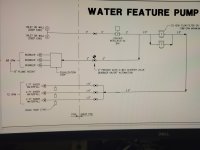- Jul 21, 2013
- 65,634
- Pool Size
- 35000
- Surface
- Plaster
- Chlorine
- Salt Water Generator
- SWG Type
- Pentair Intellichlor IC-60
I don’t see how that dual suction drain will support the simultaneous operation of the high flow spa jet pump and the lower flow of the pool/spa pump heating and chlorinating the spa.Not necessarily. Some channel drains can support dual suction lines:
While the manufacture may claim it works this is the type of decision that is expensive if it does not properly.
It is safer to just use two and know the suction for both pumps will work properly and not interfere with each other.






